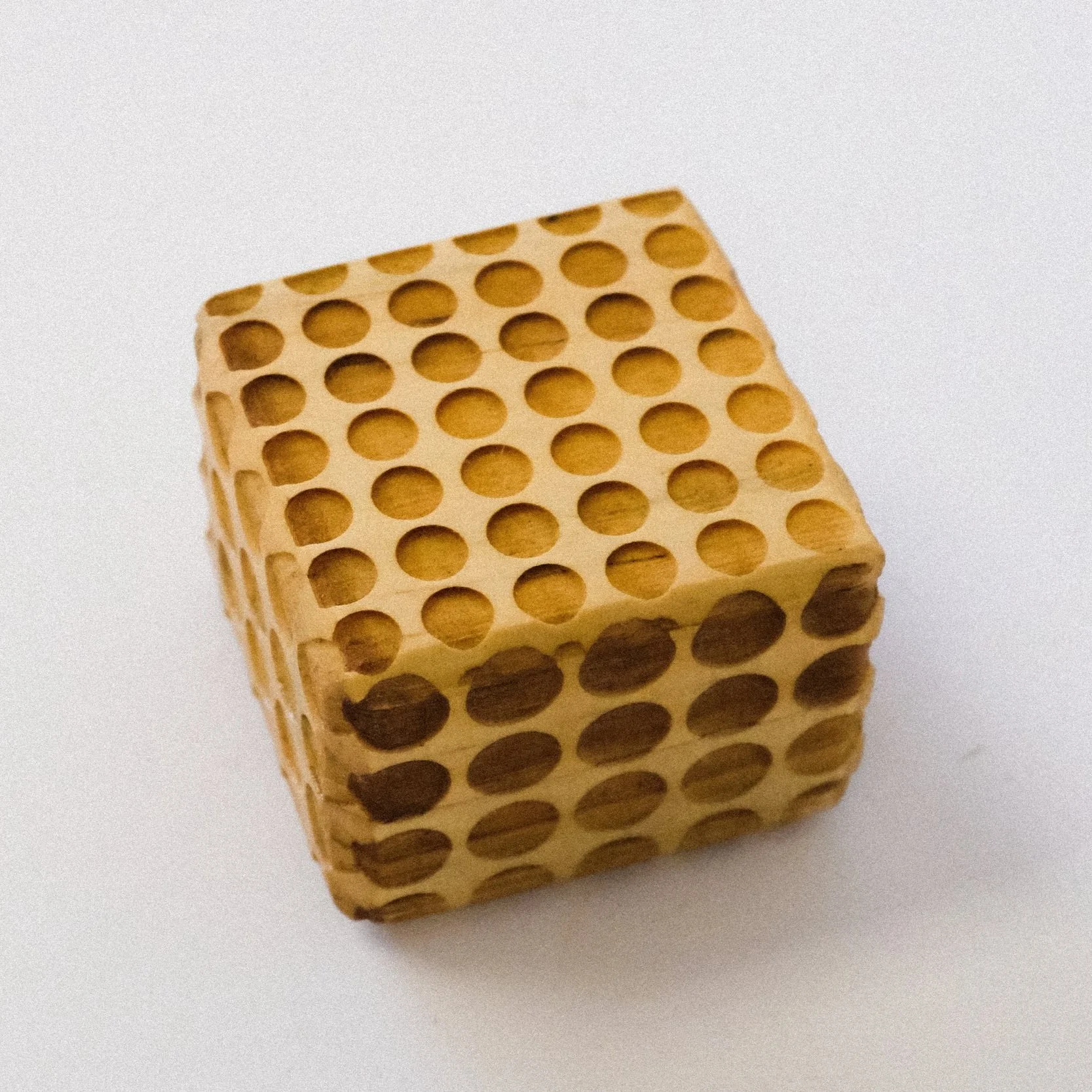
ND-40 is a multi-dimensional BFA thesis project that reimagines furniture design through the lens of the neuro-divergent mind—aiming to empower and improve the life quality of neuro-diverse populations.
Existing both in physical and digital worlds, designed to cater to various sensory modalities. ND-40 is designed along four pillars of Stimulation, Interaction, Regulation, and Modularity, which are reflected both in its form and function. The furniture follows the critical model of disability, which shifts the perception of disability from something that needs to be “fixed”, to it being a natural part of human diversity, with design through this lens celebrating universality and inclusion. The ND-40 table and its expansion packs, are interactive furniture pieces, with over 100 blocks ranging in texture and sensory applications from visual to haptic stimuli, which can be arranged and played with in various ways, either creatively or with support of exercises through the ND-40 app.
The digital app follows the social model of disability, which aims to alter the environment, in that it acts as a tool for neurodivergent populations to ease the navigation of our world, and moments of criticality. With its key features including a sensory map, which provides sensory stats for places around you, and soothing interactive exercises that can be paired with the ND-40 blocks.
Together they work to support the critical model of disability, by being inclusive, universal, diverse and multi-dimensional.
Explore the digital part of the project
three different scales
Dream it
Dream it
make nd-4o accessible to different budgets & spaces
THE table
THE midi tray
THE mini box
no hardware joining system
the l joint
The no-hardware wooden joints allow the mini boxes to stack together, as well as attach the expansion packs to the table.
The joints are attached seamlessly at the groves of the elements. With the I joints joining boxes together on the inside, and the L joints joining the expansion packs to the table on the outside. Allowing to add on and expand on your existing ND-40 furniture.
The joints add an interactive element to the furniture and fulfil the chosen design pillars of stimulation, interaction, and modularity.
the I joint
THE L JOINT ALLOWS TO TURN THE BOXES INTO MINI TABLE TRAYS, GIVING IT A SIMILAR FUNCTIONALITY TO THE ND-40 TABLE
stimulation
often a paradox for the neurodiverse. Stimulation can serve both as a calming agent, or be the prime meltdown agonist
due to sensory stimulation having regulatory impacts on mental states. nd-40 includes an array of blocks appealing to various sensory modalities.
thus promoting interaction and regulation.
blocks vary in texture, materials, and patterns. some produce sound and give off haptic feedback when touched
Production Process gallery
reflection
ND-40 was undoubtedly the most ambitious project to date, a project that was created on sweat, blood, and tears, in the most literal way of this saying. Working simultaneously on the complex furniture set and the UX case study, responsible for the ND-40 digital app. Many hours were spent at the shop, especially in the final month of production. Being there every day, usually for most of the day.
The format of the website presentation leaves out the failures, and mistakes—the challenges I faced. The number one challenge was the time constraint of our thesis presentation. The thing that was supposed to be a fairly fast and easy part of the project ended up being the haunting one. The various blocks, which add up to over 100 individual pieces, each with its own finishing treatment. Being able to produce the needed amount, and with the needed quality tested me. Thankfully, all turned out well.
This project allowed more than ever to get truly close and personal with the materials. Laying the chamfers by hand on all the cutout pieces in the legs and tabletop. Allowing myself to slow down, even when time doesn’t allow it. Hand Sanding to 320 each wooden piece, and all the furniture, to allow for the best sensory experience.
The making of ND-40 was a long process, which required utmost attention to detail and personal rigor and commitment. It allowed me to become a better designer and a better maker.
However as with every project, there are always things that could have been improved. Unfortunately, the time didn't allow me to insert magnets into all the block pieces. The metal lining in the groves and surfaces of the ND-40 table was added for this exact purpose. All the blocks would be able to securely attach to the table, without fear of dropping while moving. As well as wood provides another level of modularity and interaction, giving a user a pleasant haptic and auditory feedback when interacted with.






























































